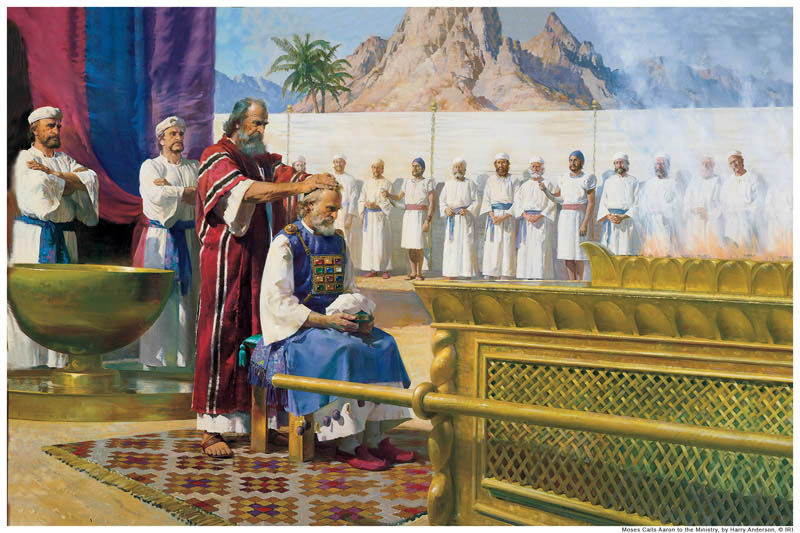Ancient temples are a focal point in the Old Testament because they are of eternal importance. A temple is the house of God, where He can come and dwell among His people. There they worship Him and learn more about their relationship to Him. Mormons (as members of The Church of Jesus Christ of Latter-day Saints are often nicknamed) believe in the importance of temples, and they continue to build them today all over the world.
 The tabernacle which Moses and the Children of Israel were commanded to construct was a portable temple. It was constructed to meet very specific qualifications, which the Lord had revealed to Moses. The tabernacle itself was surrounded by a large fence. In the courtyard of the tabernacle there was a larger altar on which the sacrifices were placed. There was also a large brass basin in which the priests were required to cleanse themselves before entering the tabernacle. In addition to being practical, the ritual washing of hands and feet was symbolic of an inner cleanliness that was required of the priest before entering the Lord’s House.
The tabernacle which Moses and the Children of Israel were commanded to construct was a portable temple. It was constructed to meet very specific qualifications, which the Lord had revealed to Moses. The tabernacle itself was surrounded by a large fence. In the courtyard of the tabernacle there was a larger altar on which the sacrifices were placed. There was also a large brass basin in which the priests were required to cleanse themselves before entering the tabernacle. In addition to being practical, the ritual washing of hands and feet was symbolic of an inner cleanliness that was required of the priest before entering the Lord’s House.
The tabernacle was covered with a fabric of skins, and upon entering the first room, or Holy Place, the viewer would find three objects. On one side of the room was the menorah. The menorah is a candelabra with seven candles, three on each side of a seventh in the middle. The menorah was a very important symbol in the temple. One of the principle characteristics of deity is higher intelligence; the glory of God is intelligence, and intelligence is light.
On the opposite side, the viewer would see a table of shewbread (or showbread). “The Israelites knew God didn’t eat anything,” said Laurence H. Schiffman, director of Judaic Studies at New York University. “By giving [him] these beautiful breads, eventually shared with the priests, it was a kind of showing that we want to give the best of what we have to the god” (Schiffman, Between Heaven and Earth).
Finally, there was the Altar of Incense. According to the Bible Dictionary, the altar of incense was similar to the altar in the courtyard, “…but smaller and overlaid with gold. On it incense was burned morning and evening…and on its horns was put once a year, on the day of atonement, the blood of the sin offering (Exodus 30:10).” The scent of the incense would ascend up to the presence of God.
Across the room extended a large piece of fabric referred to as the veil of the temple. It separated the Holy Place from a room called the Holy of Holies, or the most holy place. In that room was the Ark of the Covenant. Seated on top of the ark were two cherubim, or winged angels, their wings facing each other. This area of the Ark was known as the Mercy Seat. Here it was that God would appear to speak to his people, and therefore it was the most hallowed and sacred place in the temple. It was in essence a throne room. In addition to the blood of the sin offering being put on the altar of incense, it was also placed on the mercy seat on the day of atonement. The Jews believed this act cleansed them collectively of their sins from the past year.
Solomon’s temple was built with the same basic concepts in mind, simply on a much grander and more elegant scale. It was unfortunately destroyed during the Babylonian captivity in 600 B.C. It was rebuilt almost 100 years later by Zerrubabel, but was burned in the Roman captivity. Later on, in 17 B.C., Herod rebuilt the temple yet again in an effort to gain favor with the Jewish community. From this history, we see that rebuilding the temple was of the utmost importance to the Jews, as was its sacred nature. Mormon temples are of comparable importance to Latter-day Saints today.
Temples exist to bring light and revelation to God’s people, to help them draw nearer to Him, and
